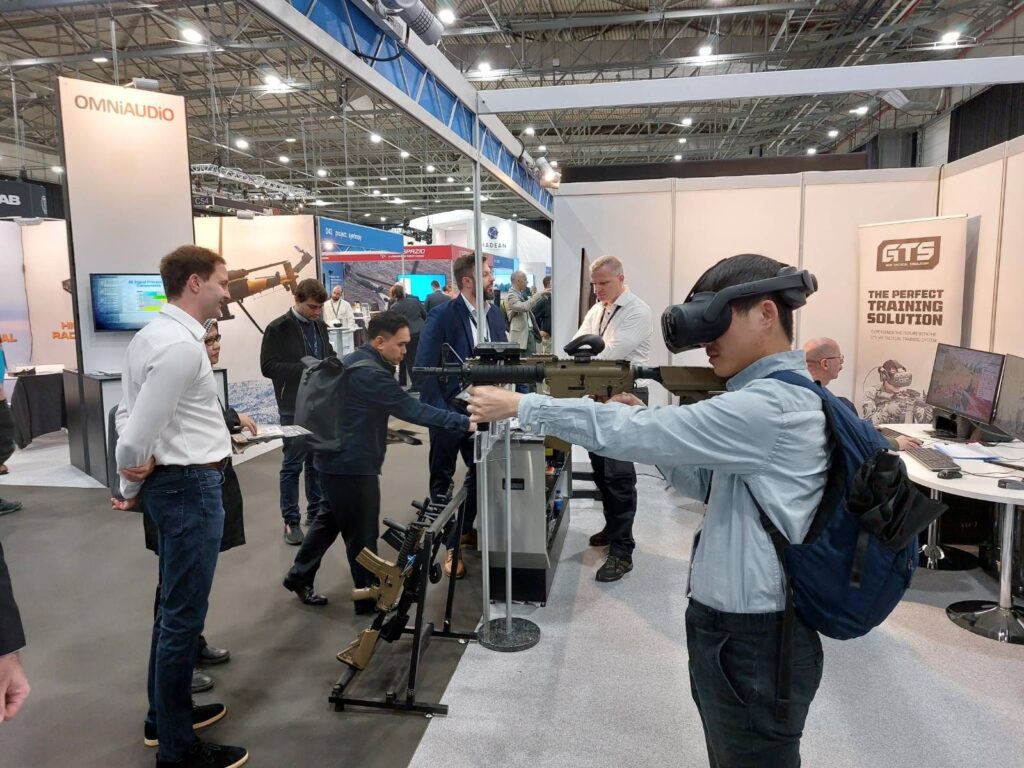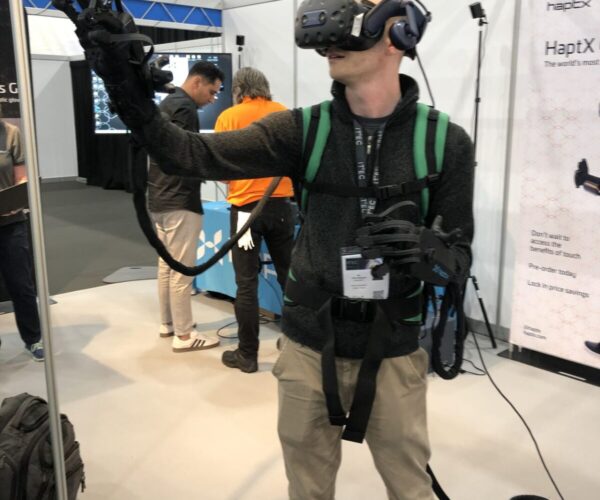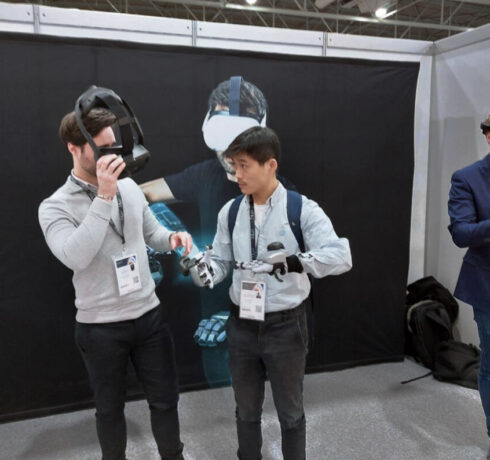Virtual Reality (VR) provides its users with a totally immersive experience. For Damen’s naval projects, VR is making itself most known in the arena of crew training. For instance, it was only a couple of months ago that Damen Naval delivered a virtual copy of the Combat Support Ship Den Helder to the Dutch Materieel & IT Command (COMMIT). Another example is the F126 project, which is currently creating multiple VR training programmes for the crews of the four German frigates. The benefits are clear: crews can get acquainted with the naval asset long before they ever step on board. What’s more, they can get trained up in their specific area of expertise. This not only increases the effectiveness of training, land-based VR training is significantly cheaper, safer and more flexible than onboard training programmes.
As with most high-tech subjects, VR progresses fast. New techniques and innovations appear on the market on a regular basis. Therefore, a company like Damen Naval has to keep its finger on the pulse of the latest developments. It was for this reason that Damen Naval sent Pak Cheung (Junior xR Solution Architect) and Péter Nagyidai (Senior xR Developer) to the IT²EC Global Defence Exhibition in Rotterdam earlier this year. Pak Cheung caught up with the Schelde Schakels to give an insight about his most notable take-aways from the conference.
 The International Training Technology Exhibition and Conference is Europe’s largest dedicated event for Defence training.
The International Training Technology Exhibition and Conference is Europe’s largest dedicated event for Defence training.
Convergent training
The conference part of the IT²EC event started with a speech from the Commodore of the Royal Netherlands Navy about the Navy’s vision of future training needs. “This included the RNLN’s desire to have so-called convergent VR training,” Pak Cheung says. “The situation right now is that every single crew member participates in their own individual VR training programme. Convergent training means that multiple training programmes are bundled into one combined programme.”
“It was nice to notice that everything that is happening on the future edges of VR innovation – every new application that I saw at IT²EC – Damen is thinking about it. I really believe that we keeping up with the latest technological advances." Pak Cheung
The benefits of such convergence are that crews can train with all kinds of VR content. “Instead of training just one aspect of the ship’s operations – firefighting or weapons handling, for example – a crew member trains on the entire chain of functionality of the ship,” explains Pak Cheung. Furthermore, such integrated training programmes can include multiple trainees. “There is immense added value to be gained by training side-by-side with your crew members. In the end, it is one ship with one crew.”
Key to achieving these convergent VR environments is standardised architecture. “Right now, this is not happening, but there are multiple entities, also on a NATO level, that are trying to develop a generic architecture that everybody can use. This is not possible right now, but it is certainly foreseeable in the future.”
The role of Generative AI
Another interesting point that Pak Cheung observed at the IT²EC event was the potential for Generative AI to reduce the labour intensiveness of creating VR environments. “One way will be to use GenAI to actually produce objects in VR; however, this capability is at least one or two years from now. Another method is to use GenAI to ‘auto-fill’ aspects of the VR environment; this includes using AI to extrude maps to create rooms, or using existing models of, for example tables and chairs, to fill out rooms. These types of actions could complement the automation of modelling that we at Damen Naval are already working on.”
 With VR training, crews can get acquainted with the naval asset long before they ever step on board.
With VR training, crews can get acquainted with the naval asset long before they ever step on board.
Improving input modalities
At the present moment, VR users generally use hand-held controllers to perform actions within the VR environment. These are functional, but not ideal as Pak Cheung explains: “VR enables crew members to take part in training programmes with no risk of damage to themselves, their crew members or to equipment: every single scenario is controllable and repeatable. But in terms of immersiveness, these ‘clunky’ controllers do not mirror reality as we know it; they are not the best if you want to train specific motor skills.”
The IT²EC exhibition offered some much-improved alternatives. “There are different types of methods that enhance organic interaction. A pneumatic glove that alters the air pressure on the skin and therefore gives the user tactile feedback is a good example.”
Conclusion
“It was nice to notice that everything that is happening on the future edges of VR innovation – every new application that I saw at IT²EC – Damen is thinking about it. I really believe that we keeping up with the latest technological advances,” Pak Cheung concludes.

